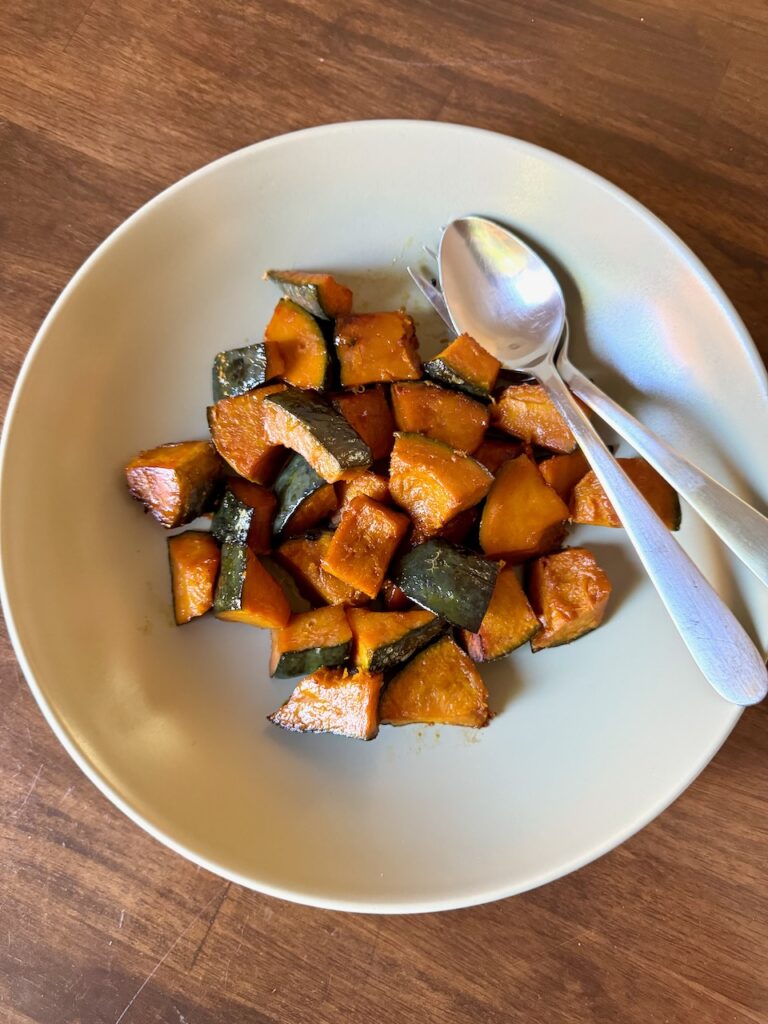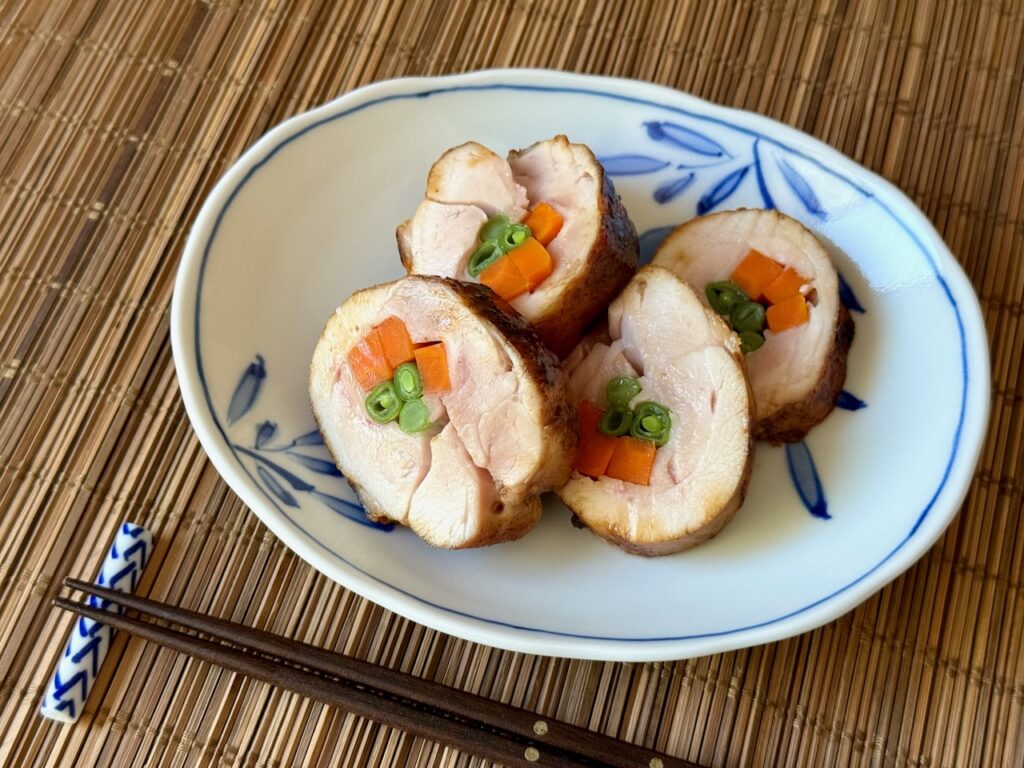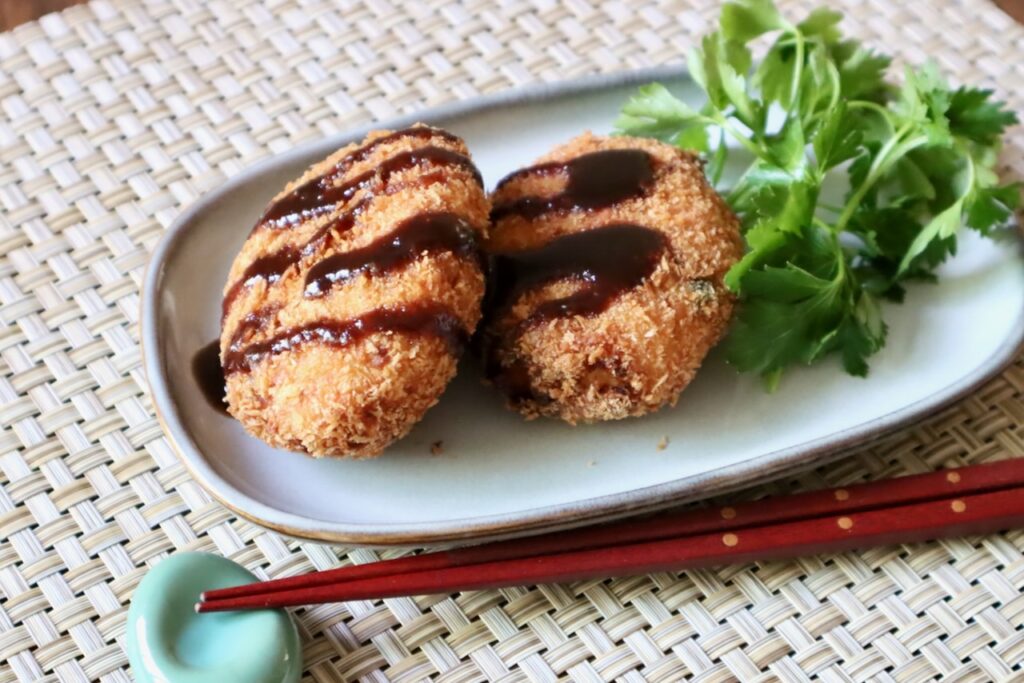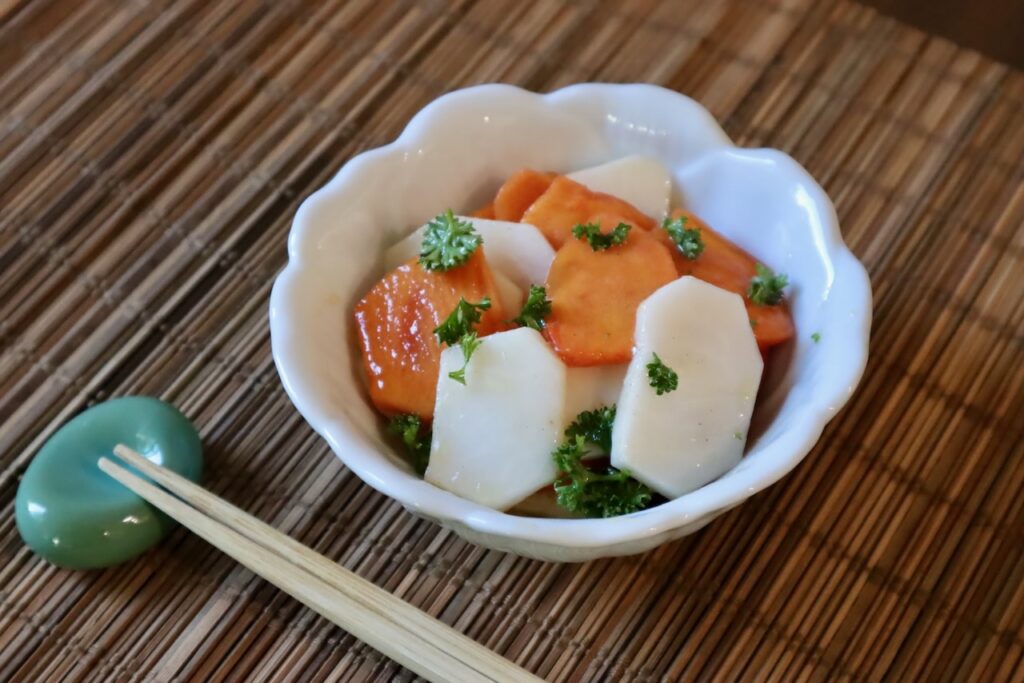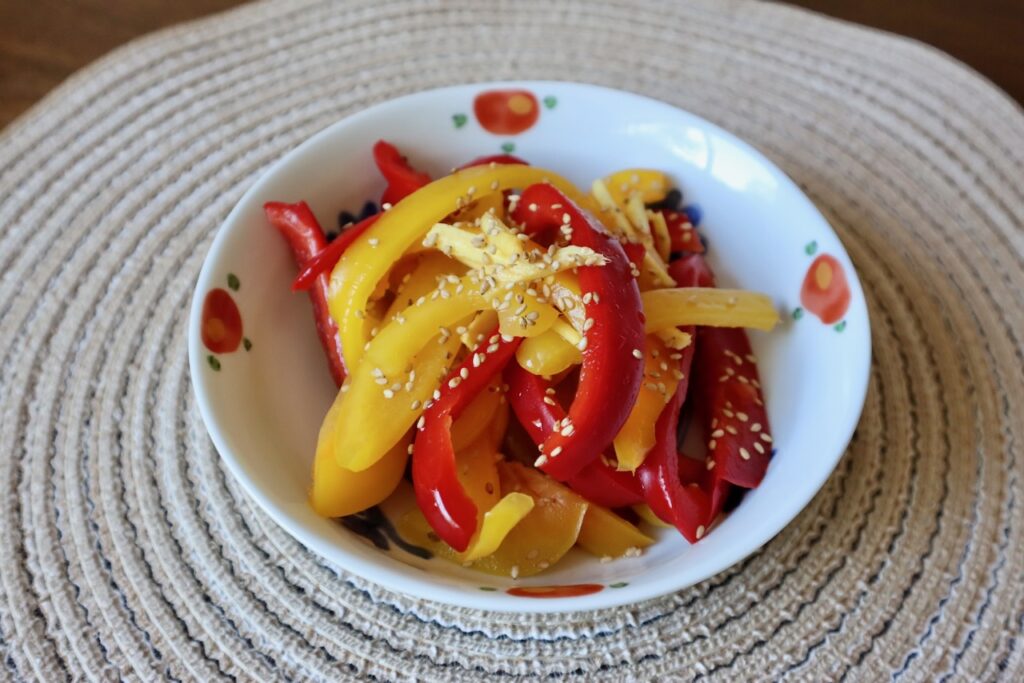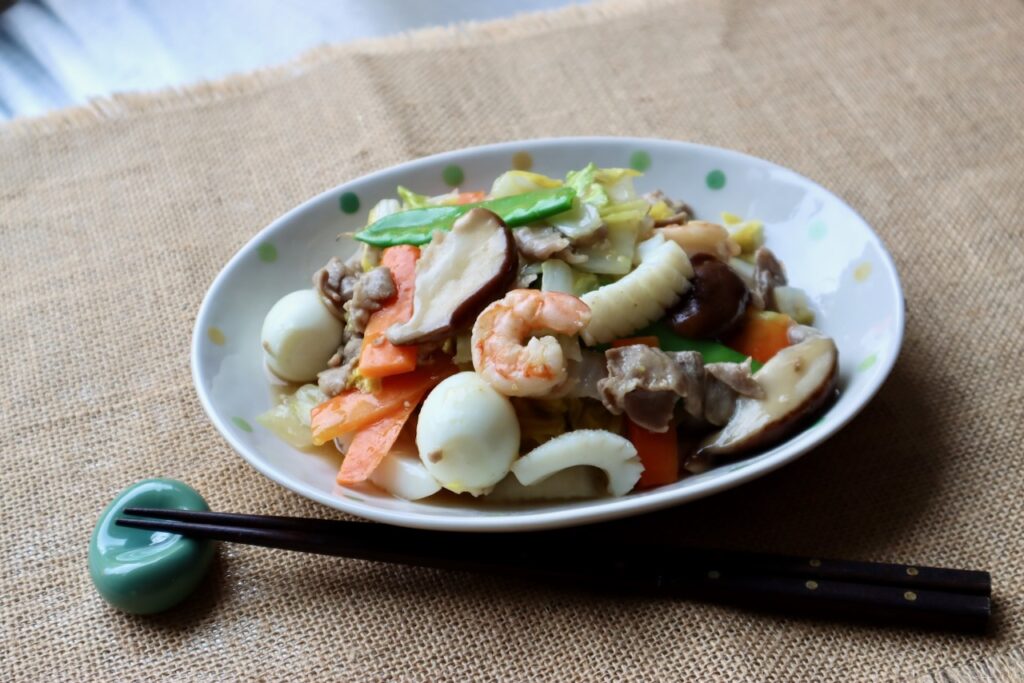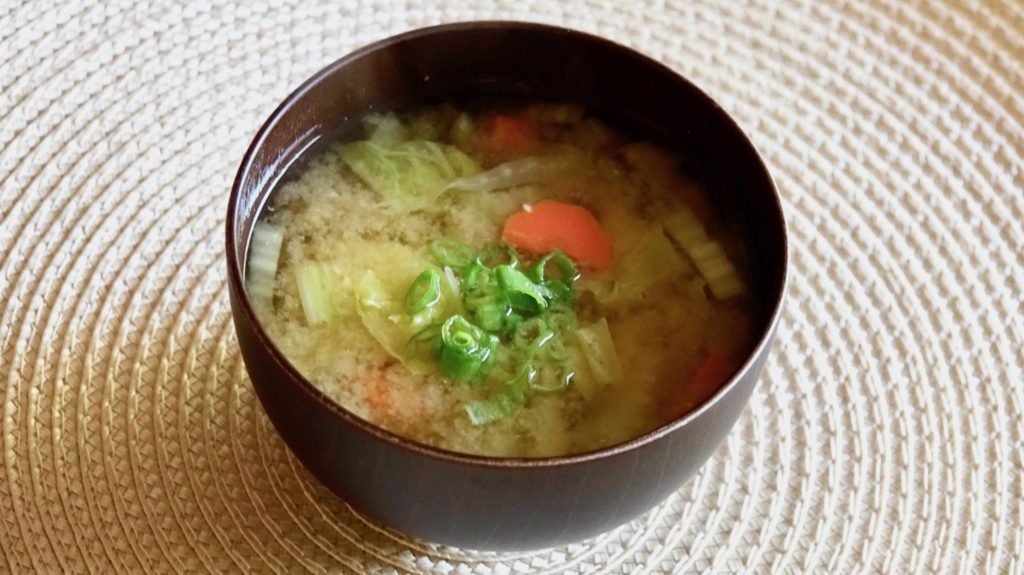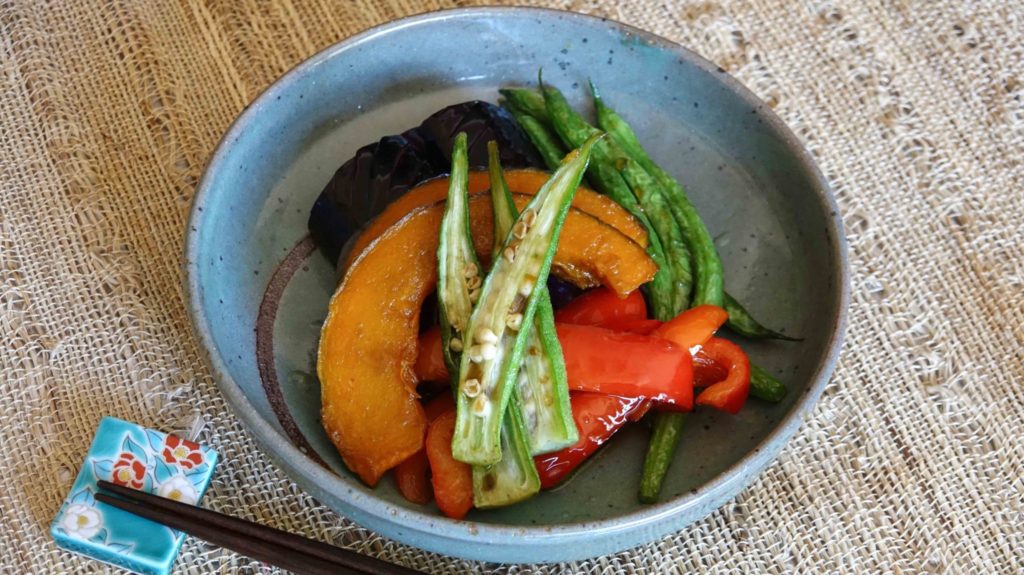Roasted Kabocha with Soy Maple Butter is an easy and delicious way to eat Kabocha squash, also known as Japanese pumpkin. Kabocha is cut into bite sized pieces and coated with melted butter mixed with maple syrup, olive oil, and soy sauce. There are so many ways to cook Kabocha (see all of our Kabocha recipes here), but this is one of my favorites, and it’s probably the easiest!
Rolled Chicken with Vegetables is a dish featuring pan-fried chicken thighs rolled up with carrot and green beans, flavored with a light teriyaki sauce. This easy chicken recipe makes a great dinner option or an attractive addition to a Bento box for lunch. The lightly sweetened teriyaki sauce is perfect for everyday meals. We also have a similar recipe, Beef Roll Up with Vegetables, which is delicious too, but here, we’ve used chicken thighs, pounded thin, instead of thinly sliced beef. If you love chicken or prefer to avoid red meat, this dish is for you. To make it even healthier, consider using chicken breast. You can also experiment with other vegetables like asparagus or zucchini—just be sure to adjust the cooking time for the filling based on how tender the vegetables are. Choosing colorful vegetables will make the dish look even more appealing when sliced. We hope you give it a try!
Vegetable Korokke (野菜コロッケ) is a deep-fried dish consisting of mashed potato and vegetables with a crispy outer layer of Panko bread crumbs. While our regular Korokke typically include meat such as ground beef or pork, this version is vegetarian-friendly. By substituting butter in the recipe with vegetable oil, it can also be transformed into a vegan dish.
This simple salad is made with fuyu persimmon and small radish which are both in season during fall through winter. Known as the national fruit of Japan, persimmons have been loved by the people of Japan for over a thousand years. Persimmons are naturally sweet, and they can be eaten firm or soft after being ripened. For this salad, it’s best to use persimmons that are ripe but still firm.
This bell pepper tsukemono is something between pickles and salad. Rice vinegar and sugar adds just enough sourness and sweetness to the red and yellow bell peppers. Ginger root and sesame seeds are great accent in flavor. Eat as is or pour a little bit of soy sauce over if you like. Bell pepper tsukemono can be a great appetizer or a little side dish next to a bowl of steamed rice.
Happosai (八宝菜) is another Japanese Chinese dish similar to Yasaiitame stir-fry vegetables. Various vegetables, seafood, and pork are braised in a gooey savory sauce. It is a wonderful entree for dinner or a hearty lunch over rice.
Miso Soup is one of the most important dishes in Japanese cuisine. It comes with every meal, every day, with meals using Steamed Rice as a main starch. Because we eat Miso Soup so often, we try to simplify the process of making it, and add more variations to it so that we don’t get tired of eating it. Everyday Miso Soup is Miso Soup for everyday living, combining Japanese tradition with cleaning up leftovers.
Vegetable Agebitashi is deep-fried vegetables marinated in a Soy Sauce-based sauce. It can be eaten at room temperature or chilled. In summer, cold Agebitashi is very nice. Cook while it is still cool in the morning, and chill in the fridge in the afternoon until serving for dinner.
